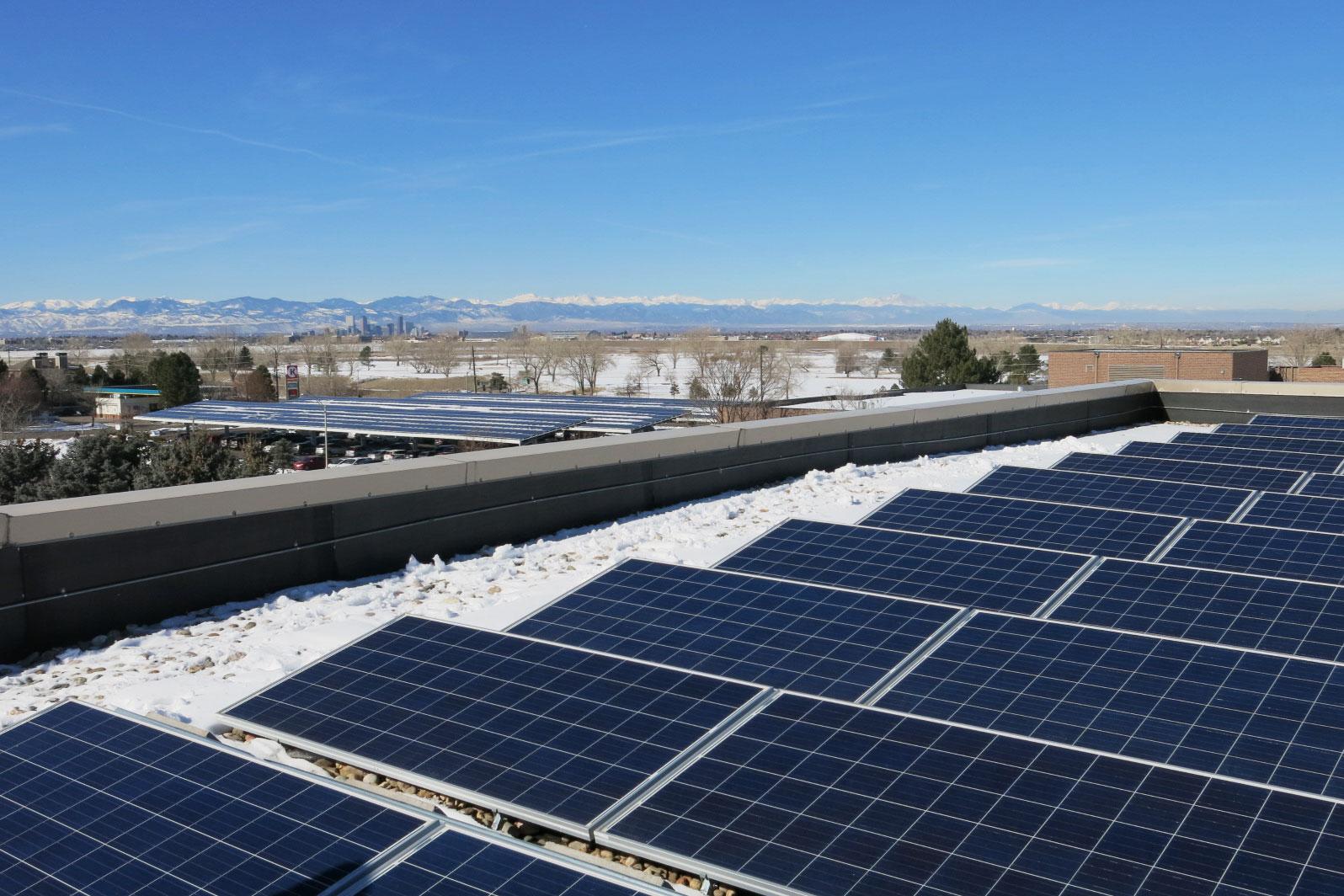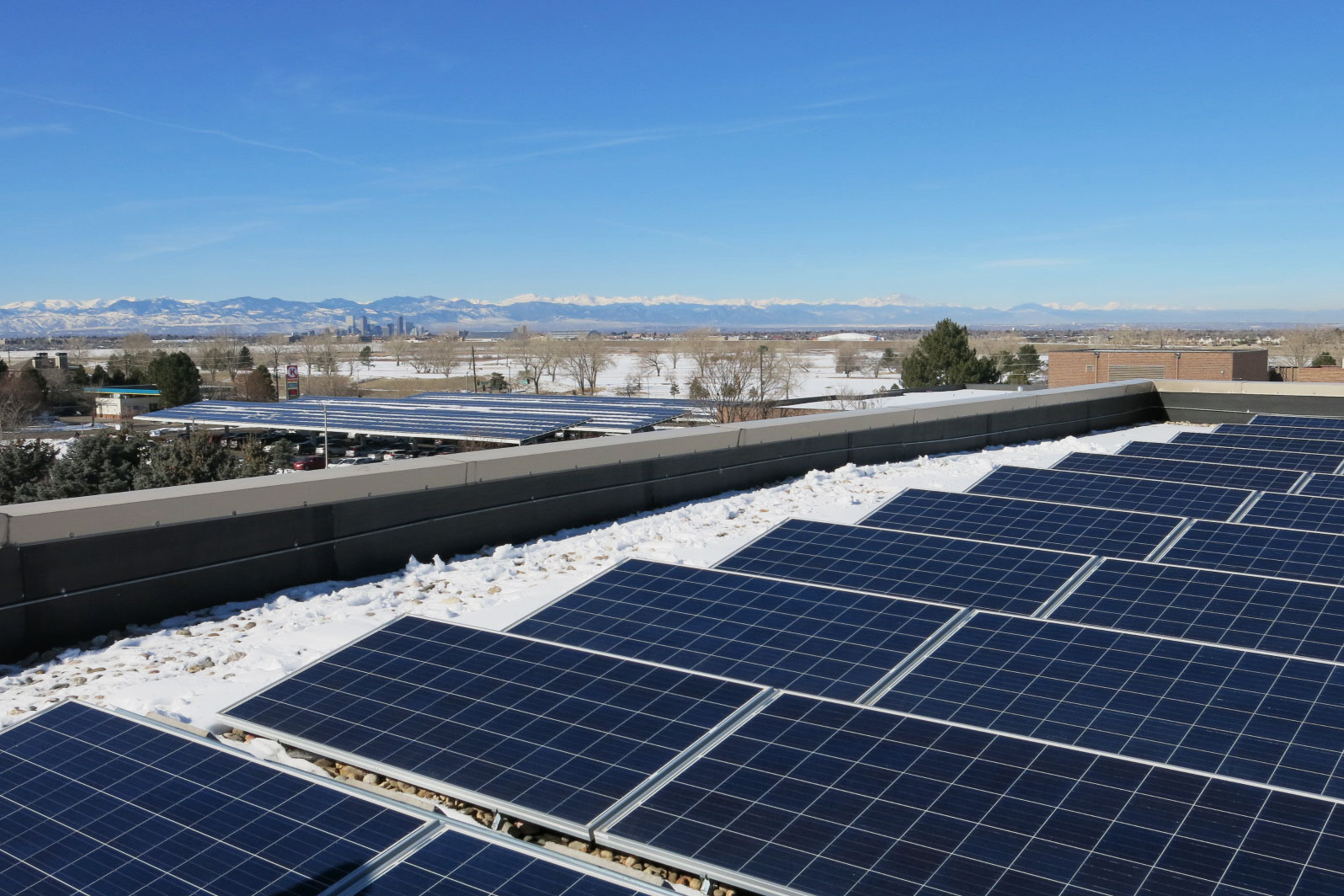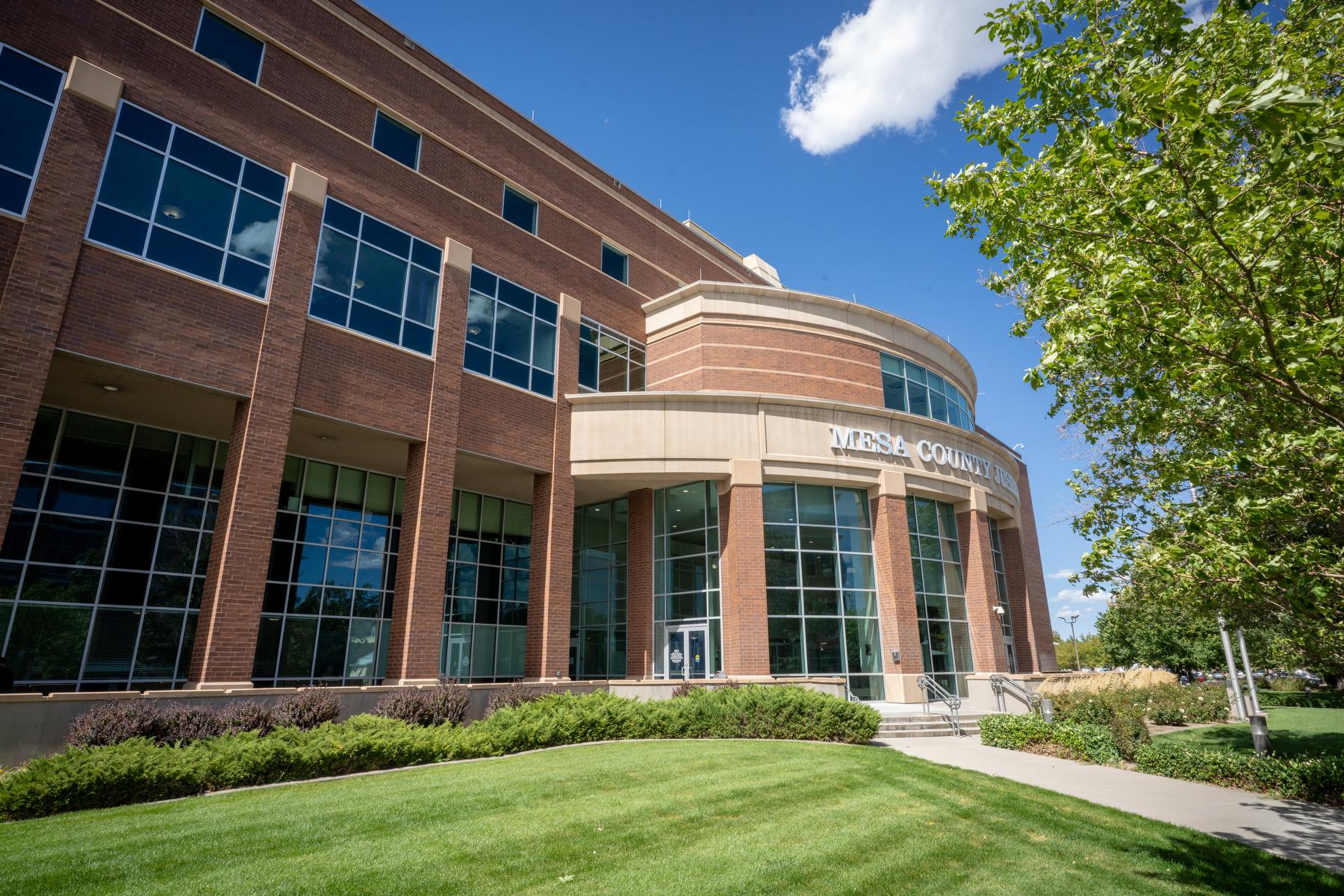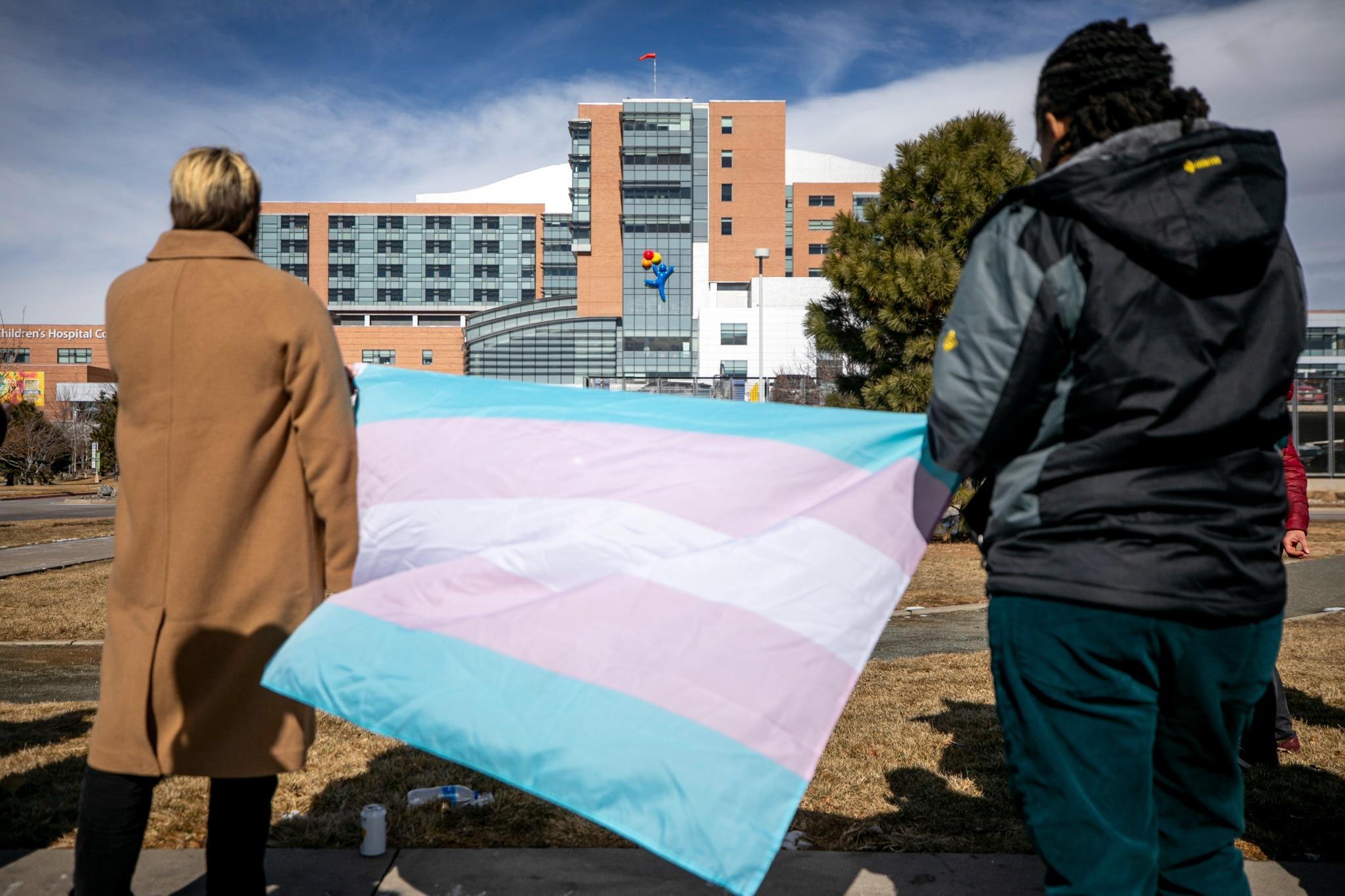

Corporate investments in renewable energy used to be symbolic. A few solar panels here, a small wind farm investment there. But in 2018 some companies became voracious green energy consumers.
Kaiser Permanente’s Denver administrative office is awash with rooftop solar and solar panels on carports.
The arrays were added in 2015, but in 2018 Kaiser wanted to make a bigger dent toward the company’s carbon neutral goal. So it inked a deal to buy 180 megawatts of new wind and solar from sites in Arizona and California. This is a tremendous amount of green power, a magnitude that only interested utilities a decade ago.
“Corporate procurement has really started to drive a lot of the market….[That] supports an incredible amount of jobs for consultants, for engineers, for contractors and construction workers. It’s definitely driving a lot of economic activity,” said Brian McCurdy, founder of Greycliff Advisors LLC, a consultant that represents renewable energy developers, utilities and large corporations.
Across the nation, companies doubled the amount of wind and solar purchase agreements in 2018. One driver was soon to expire federal tax credits. The key driver, however, is investor and customer preference for green energy. Even after President Donald Trump announced plans to pull out of the Paris Climate Agreement, companies continued to double down on green efforts.
“Are they losing money? Hopefully not,” said Kevin Haley, a program manager at the Business Renewables Center at Rocky Mountain Institute. “These contracts are long term. Many of them are anywhere from 10 to 20 years, and over the lifetime of that contract they are projected to be revenue positive for the company.”
Here’s how these power purchase agreements work: A company like Kaiser agrees to buy green power at a fixed price for several years, typically decades. That energy doesn’t directly power company buildings, it instead goes into the electric grid. Over time, companies can make money through sales of that wholesale power on the market. The ultimate goal is for the revenue to be greater or equal to a company’s overall electric bill.
Corporate giants like Facebook, Walmart, Microsoft and Apple made big deals in 2018, but now smaller corporate fish have waded into the pond.
“We had Etsy do a deal last year, J.M. Smucker Company that makes jellies and jams,” Haley said. “It’s a great way for them to reduce a lot of carbon all at once.”
Colorado-based Vail Resorts has joined the ranks of small companies as well. It inked a 12-year agreement to buy new wind that will be produced from a Nebraska farm starting in 2020. When the wind farm is operational, the purchased power will offset Vail’s fossil fuel use across North America.
“This is the way that a company that’s geographically diverse can make a significant impact and bring new renewable resources online,” said Kate Wilson, director of sustainability for Vail Resorts.
The ski company won’t talk about how much that’ll cost. They’ve taken other steps though, such as the installation of solar at resorts. Vail has also signed up with Xcel Energy to pay for a solar energy subscription.
That’s one small way utilities are helping companies get more renewables. Xcel’s subscription program, Renewable Connect, sold out in one day.
“That was a pretty good indicator that this 50 megawatt resource, there’s more interest out there beyond that,” said Ryan Matley, product development team lead with Xcel.
The utility wants to launch more subscription programs. Xcel also started to tailor specific projects for bigger clients. In 2018, Xcel got regulatory approval to build a 240 megawatt solar array for EVRAZ Rocky Mountain Steel in Pueblo. Matley said the project wasn’t driven by climate concerns, but by EVRAZ’s desire for cheap reliable energy.
“As renewable costs have come down, this looks like not just a great sustainability opportunity but a great economic opportunity,” he said.
Ultimately, the future of corporate investments in renewables could be about large-scale production right on site. Boulder-based Black Bear Energy helps commercial real estate owners add large solar arrays to office parks, apartment buildings and industrial sites. As battery technology evolves, CEO Drew Torbin said companies are opting for larger and larger installations.
“If you think about how many buildings don’t have solar and don’t have batteries, the fact that the industry is so new, and that’s a great thing,” said Torbin. “Because we have a long way to go and a lot of benefit we can create.”
Black Bear booked twice as many projects in 2018 compared the year before. As the price of solar continues to drop, Tobin expects 2019 to be its busiest year ever.









